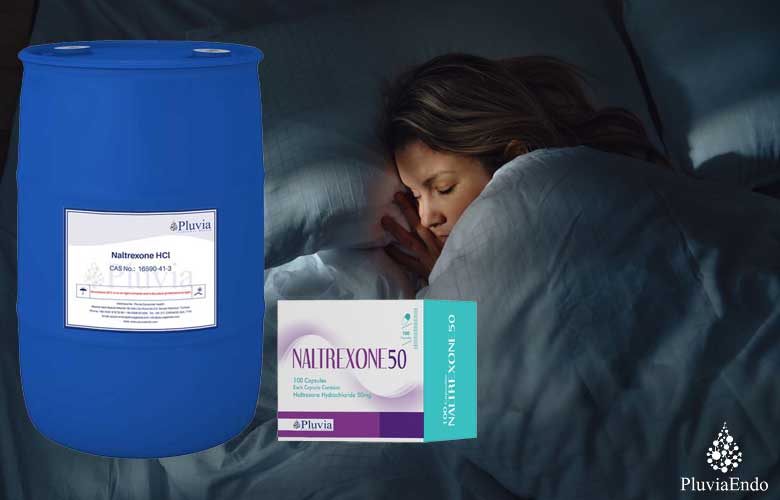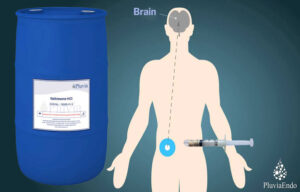Naltrexone, an opioid antagonist primarily used in the treatment of opioid dependence and alcohol use disorder, has garnered attention for its potential role in addressing sleeping disorders. As a manufacturer of Naltrexone HCl and Naltrexone 50 mg, PluviaEndo recognizes the importance of exploring this connection further. This blog post delves into the relationship between naltrexone and sleep, highlighting its therapeutic potential in clinical practice.
Understanding Naltrexone
It works by blocking the effects of opioids at the receptor level, which can help prevent relapse in individuals recovering from addiction. However, its mechanisms extend beyond addiction treatment. Recent studies suggest that naltrexone may also influence sleeping patterns, particularly in individuals suffering from sleeping disorders, such as insomnia or sleeping apnea.
The Impact of Sleep Disorders
Sleeping disorders affect millions of people worldwide, leading to significant health issues such as obesity, diabetes, cardiovascular diseases, and mental health disorders. Insomnia, characterized by difficulty falling or staying asleep, and obstructive sleep apnea (OSA), where breathing repeatedly stops and starts during sleep, are among the most common conditions. These disorders not only affect the quality of life but also impair cognitive function and overall health.
Naltrexone and Sleep: Emerging Research
Recent research has begun to explore the effects of naltrexone on sleep quality. A study indicated that naltrexone may improve sleeping quality in patients with sleeping apnea by reducing the frequency of apneic events. In this study, patients treated with naltrexone showed a significant decrease in the apnea-hypopnea index (AHI), suggesting improved breathing patterns during sleep.
Another interesting aspect of its effects on sleep is its influence on the sleep-wake cycle. Naltrexone is believed to promote the release of endorphins, which can enhance mood and reduce anxiety. This effect may lead to better sleep quality, particularly for individuals whose sleep disturbances are linked to anxiety or depression.
Clinical Applications of Naltrexone for Sleep Disorders
Given the emerging evidence supporting the use of naltrexone for sleeping disorders, healthcare providers may consider integrating it into treatment plans for patients struggling with insomnia or sleep apnea. Here are some potential clinical applications:
- Insomnia Management: For patients with insomnia, naltrexone may help alleviate symptoms by reducing anxiety and promoting more restful sleep. By blocking opioid receptors, naltrexone may also prevent the sedative effects of certain medications that could disrupt sleeping patterns.
- Obstructive Sleep Apnea: In patients diagnosed with OSA, naltrexone may serve as an adjunct therapy to traditional treatments. By improving airway stability and reducing apneic events, naltrexone could enhance overall sleep quality and reduce daytime fatigue.
- Combination Therapies: Naltrexone can be utilized alongside other sleep aids or therapies to create a comprehensive treatment plan. This approach allows healthcare providers to address the multifaceted nature of sleeping disorders, tailoring interventions to meet individual patient needs.
Considerations for Healthcare Providers
While the potential benefits of naltrexone in treating sleeping disorders are promising, healthcare providers should consider several factors about Naltrexone and Sleep before incorporating it into treatment plans:
Patient History:
A thorough assessment of the patient’s medical history, including any history of substance use disorders, is crucial. Naltrexone is contraindicated in individuals currently using opioids, as it can precipitate withdrawal symptoms.
Dosage and Administration:
The appropriate dosage of naltrexone for sleeping disorders may vary based on individual patient needs. Providers should start with the lowest effective dose and monitor patients for any side effects or adverse reactions.
Monitoring and Follow-Up:
Regular follow-up appointments are essential to assess the effectiveness of naltrexone in improving sleep quality. Providers should also monitor for any potential side effects, such as gastrointestinal issues or mood changes.
Conclusion
Naltrexone presents a novel approach to addressing sleep disorders in clinical practice. This is particularly beneficial for patients with insomnia and obstructive sleep apnea. As a manufacturer of naltrexone HCl and naltrexone 50 mg, PluviaEndo is committed to supporting healthcare providers. We aim to help them explore the potential benefits of this medication.
The relationship between naltrexone and sleep is an evolving area of research. Further studies are needed to fully understand its mechanisms and efficacy. However, the existing evidence suggests that naltrexone may offer valuable therapeutic options for patients struggling with sleeping disorders, ultimately improving their quality of life and overall well-being.
By integrating naltrexone into treatment plans, healthcare providers can take a significant step toward addressing the complex nature of sleeping disorders. This approach can pave the way for enhanced patient outcomes and healthier sleep patterns.







